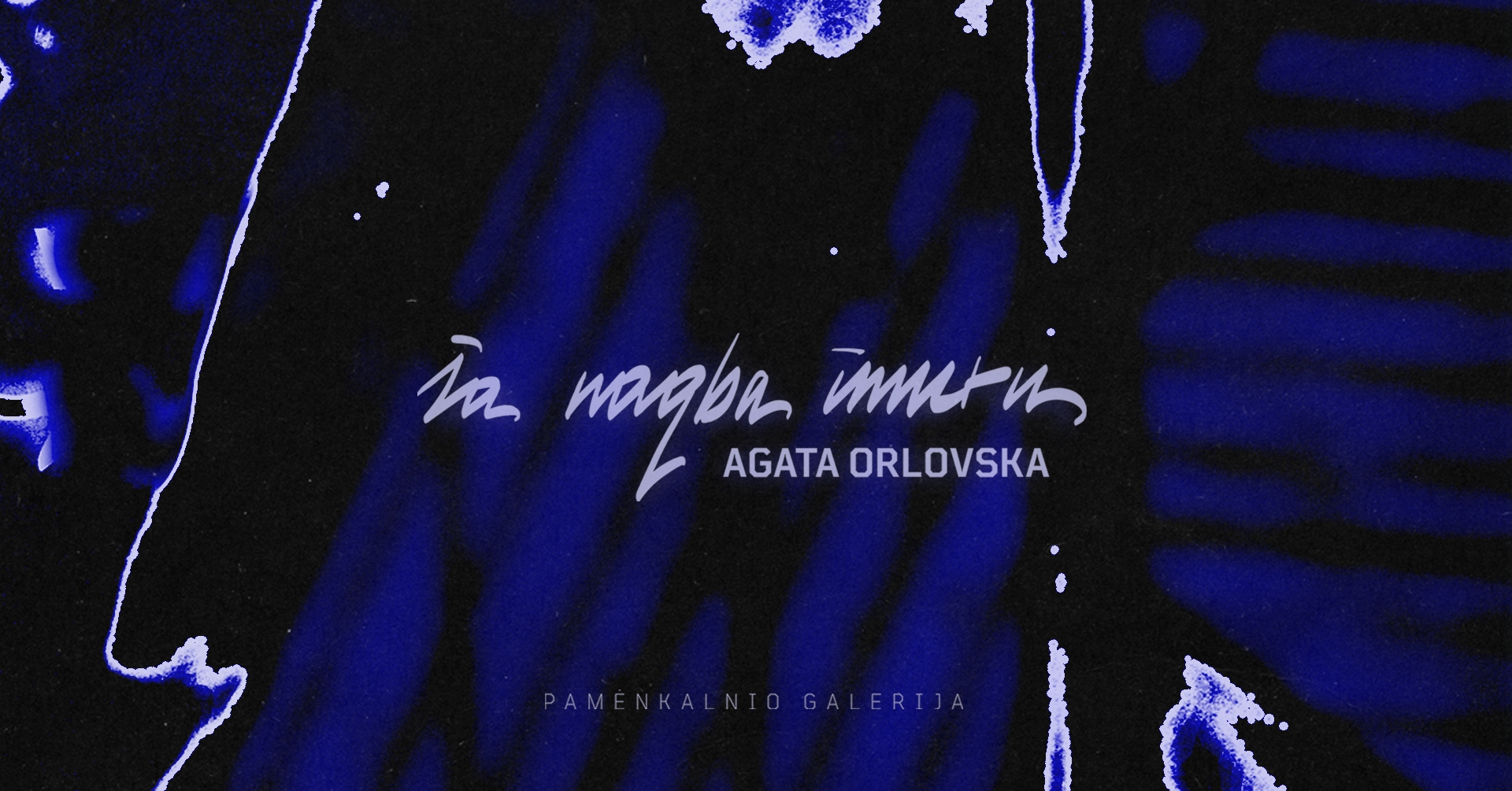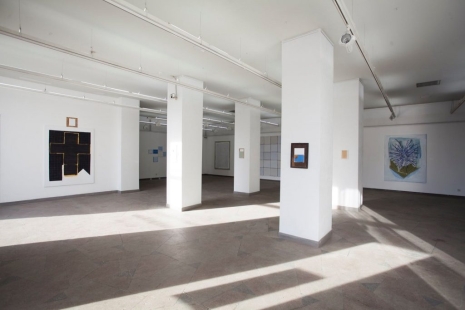The desire to see the invisible stems from the urge to know more than what lies on the surface of phenomena. When confronted with the overflow of the world’s manifestations, it becomes increasingly difficult to grasp the totality of the world, which we constantly dissect with various tools, reducing it to the cognitive limits of our ability to comprehend, calculate, and predict it. We lose the aspiration to build a picture of the world and look only at its fragmented parts and their interactions, where we try to identify the patterns that enable us to stretch our imagination and emerge from the ocean of cognitive limits.
Sunken in the deep blue, the exhibition is a fusion of rather varied objects, material connections, contents and contexts. Each of its segments, diverse surfaces, materialities and forms, constitute a multi-faceted archipelago of meaning. The interconnected parts of this system, in some places converging and overlapping, but at other points function antinomically, and due to their different primary sources, give the impression of a heterogeneous assemblage – each connection between the works and their parts can be illuminated in innumerable ways, with no clear possibility of unifying and summing up the whole. The architecture of the exhibition and its objects move in multiple registers, which hardly flow into a clear and coherent body. It is as if they create a void of meaning that emerges in the act of unfolding a commonality. In this lack of holistic experience, the deceptive consciousness looks only at the material or discursive surfaces, blocking our ability to see the whole landscape – and preventing us from immediately reaching the myriad of sources that emerge from beneath the layers and depths.
The exhibition’s staging of experience is based on the verse from the Epic of Gilgamesh – 𝑠̌𝑎 𝑛𝑎𝑞𝑏𝑎 𝑖̄𝑚𝑢𝑟𝑢 (Eng. He Who Saw the Deep) – and encoded metaphor of the culminating point of the journey of knowledge, of becoming aware. The invisible, imperceptible, intangible elements engraved in the works’ bodies are converted into mental images within the perceiving subjects, extending the limits of their physical manifestation. The extension of the objects into the perceiver’s consciousness and the inverse loop of this consciousness into the works creates a feedback loop between direct and mental imagery – living and non-living media. At the moment of this performativity of material and invisible components, the alignment of the manifold image begins to unfold as a multidimensional but singular organism, combining different sets of meaning-making, references, historical periods and cultural contexts, technological tools and concepts, which flow into a pool of common denominators. Their discovery allows us to see the invisible and to gaze into the depths of the ocean.
Agata Orlovska is a new-generation interdisciplinary artist, who graduated in 2023 with a Master’s degree in Painting and is currently working on installations and objects, conceptually combining various media, with a particular focus on the materiality of surfaces and the interactivity of works. Through her research, Orlovska attempts to discover the connections between sensory and mental modes of perception in art and the interpretive potential that emerges from this synthesis, which she explores through the concept of acousmaticity in sound aesthetics. Her work is full of dialogues between belief and knowledge, the historical and the immediate, and the relationship between the work of art and the spectator. Orlovska’s works are often time-varying, actively engaging with architecture, interactive, kinetically adjusting their physical forms, and not susceptible to a single, stable meaning.
Curated by Linas Bliškevičius
Graphic design by Ringailė Demšytė
Logo by Monika Radžiūnaitė
Olfactoric object by Laimė Kiškūnė
Sound by Arturas Bumšteinas
Special thanks to Jurgis Paškevičius, Rytis Urbanskas, Dovas Vyšniauskas, Kristijonas Žungaila, Benas Lipavičius, Paulius Tumelis, Laura Matukonytė, Jonas Aničas, Tauras Kensminas, Mykolas Sauka, Vytautė Bernatavičiūtė, Layla Ismayil, Hubert and a friend, and two random customers of Elska café
Organiser – Pamėnkalnio Gallery
Partner – DRIFTS gallery
Sponsored by Lithuanian Council for Culture, Vilnius City, SoliTek, Lithuanian Artists’ Association
The exhibition is also part of the presentation of the work of the winner of the Young Painter Prize ’24





